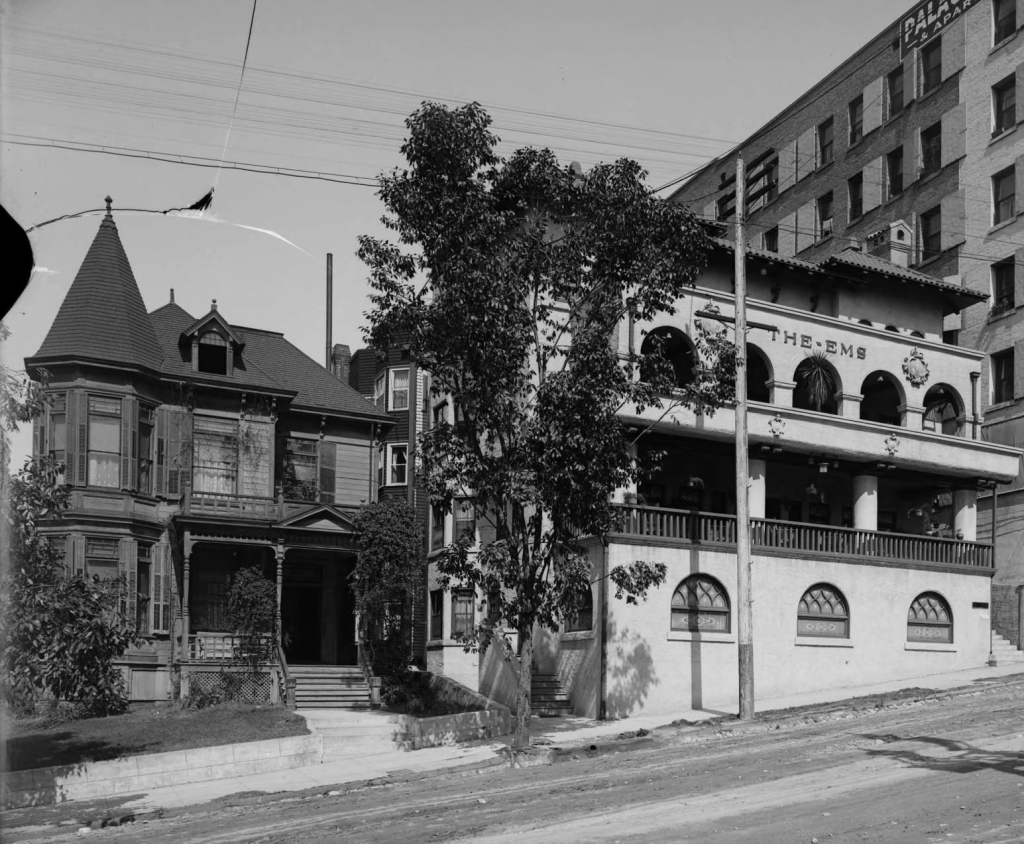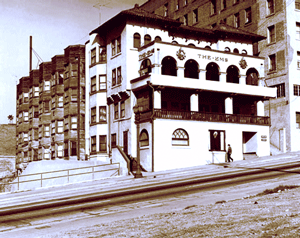

In what will surely go down as the smarmiest piece of journalism in history, the Times recounts the travails of Toy Lane, dancer at the Chinese Junk, 733 North Main. She made her way over to the Junk from her pad at The Ems to shimmy for shekels on September 25, 1946. When she gets into the nightclub dressing room to “dress” for her act (the Times‘s flippant application of quotation marks, not mine) she discovers her wardrobe has been stolen: G-string No. 1 (black and orange, beaded,) $35; G-string No. 2 (silver metallic cloth,) $23; beaded shaker, $20; rhinestone brassiere $20; an anklet and armband set, $25.
Miss Lane, it was reported, was mortified–she had to dance with her clothes on!
In a final piece of facetiousness, the Times noted “the police were searching for the burglars and the large van they must have used to carry away the loot.”
The Chinese Junk Café:
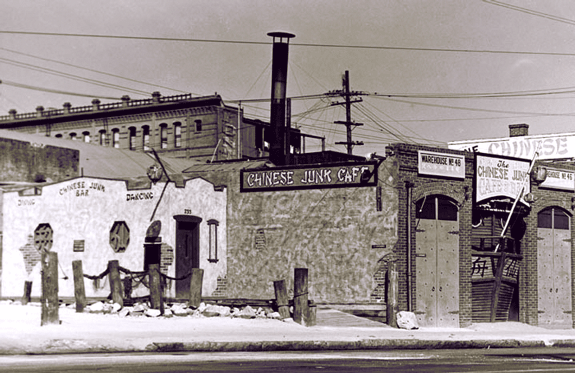
Which was up in China City, a 1935 Chinesque development that predated New Chinatown, and had been the baby of wealthy socialite and “Mother of Olvera Street” Christine Sterling. China City was mostly burned out, literally and figuratively, by the early 50s.
And of Ms. Toy‘s home, the Ems?
Remember the Palace/Casa Alta post, which was long on storytelling but short on pretty pictures? I even chided you for looking at a structure that was not our hotel-in-question, by tossing über-comely Bunker Hill lass The Ems smack dab into the mix.

I even promised I‘d talk about the Ems “next week,” but by next week it was President‘s Day, and somebody had to make you mindful of your nation, despite all the patriotic work you were doing watching Obama informercials.
Well, now it‘s the week after next, and it‘s time for the Ems, which is replete with pretty pictures but sadly short on storytelling. Here‘s what we know.
Charles Clayton Emswiler came to LA in the boom eighties and went into the apartment-house building game. In August of 1905 he pulled permits to build his eponymous Mission-style Ems, designed by none other than Joesph Cather Newsom. Emswiler died in 1922, age 69, in the apartment house at 321 that bore his name.
It contains 110 rooms, divided into twenty-six apartments according to the 1939 census, sixty-five apartments according to the 1950 Sanborn map. Here it is before its birth, from the 1896 Sanborn map (321, bottom), and postnatal from the 1906:
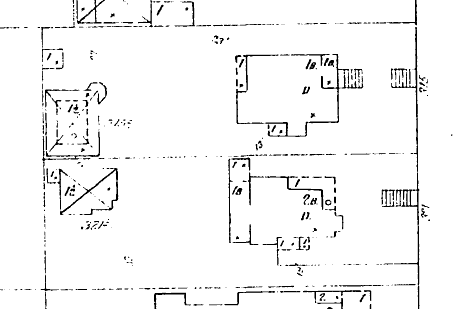
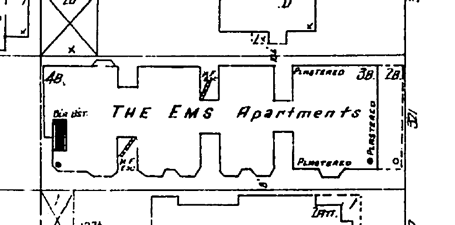
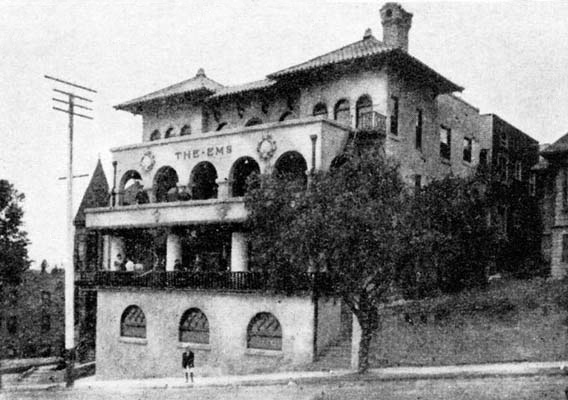
Our earliest known shot, above. Pre-1908, because the Kellogg has yet to be built to the north. Notice the three round-arch traceried windows along the street, and the turreted house to the south.
We know that it had a large ballroom, for in 1909 the papers announced that sixty couples participated in the dancing at the inaugural ball honoring President Taft.
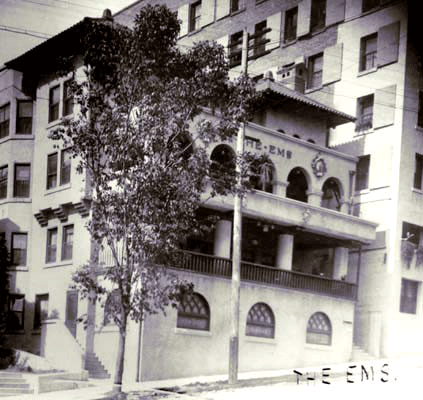
The Ems were apartments-of-choice for a collection of colorful characters.
1914. “Mohawk Half-Breed” Daniel T. La Rae, alias Daniel T. Ray, was an Ems resident (Emsident?) with Miss Emma Ewalt–they stayed there together, but were (!) unmarried. Daniel spent a lot of time promising to marry Miss Ewalt, even going so far as to travel to Shelby, Ohio, to visit her father. Mostly what Daniel did, though, is borrow money–he needed these sums to purchase marble on bond to build post offices and such. Of course he could be trusted; he was a Federal Officer, after all.
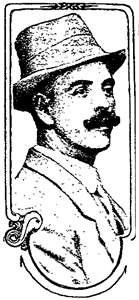
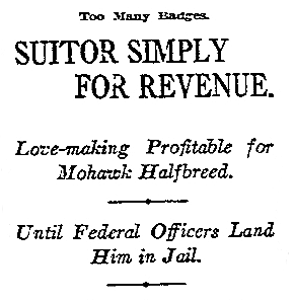
He had shown Emma a badge emblazoned “U. S. Marshal,” but never paid back the money nor made good on his promise of marriage. Of course his badge was a phony as his promises. Turns out his real job was for the Southern Pacific RR, guarding Chinese as they were ferried from San Francisco across the Mexican border line. Chinese actually go home to Mexico. Little known fact.
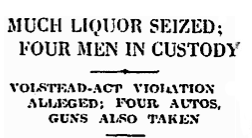 1924. Emsians Jack Hart and James Whitmore were no mere bathtub gin fanciers, nor busted-at-the-speak spuds; the Feds seized Hart & Whitmore‘s forty cases of champagne, seventy-five cases of Scotch, and seventy-three cases of gin, crème de menthe and grain alcohol down at their warehouse, 1840 Lebanon. The liquor was valued at $40,000. In addition to the liquor, the drys seized a large truck, three touring cars and several rifles.
1924. Emsians Jack Hart and James Whitmore were no mere bathtub gin fanciers, nor busted-at-the-speak spuds; the Feds seized Hart & Whitmore‘s forty cases of champagne, seventy-five cases of Scotch, and seventy-three cases of gin, crème de menthe and grain alcohol down at their warehouse, 1840 Lebanon. The liquor was valued at $40,000. In addition to the liquor, the drys seized a large truck, three touring cars and several rifles.
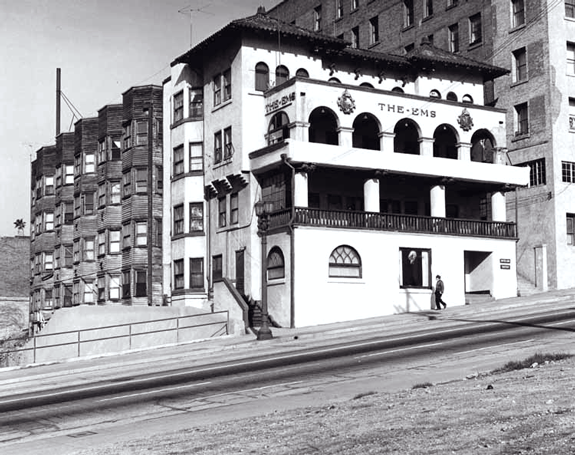
Above, the Ems in 1912 and a William Reagh image ca. 1960. Notice the rounded tripartite fenestration, which worked so well with the rest of the façade, has been changed to a single remaining arched window, a square window, and a doorway. This is due to owner William Fisher’s February 1927 alteration–he hires architect B. N. Rickard, of whom you have never heard, and rightfully so, since this is pretty clunky work, to convert the lobby into two bedrooms and turn the ball room into a new lobby. (Note too that the neighboring house–built in 1887-88 by Howard W. Mills, of real estate firm Mills, Crawford, Pauly & Clapp–at 327 South Olive has been reduced to a concrete pit, demolished for a parking lot in the summer of 1948. )
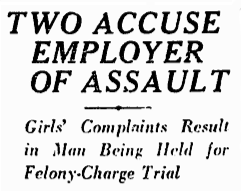 1930. An employment agency sent Emsite Erma Gogleu, 16, to 903 West Twenty-First St. to fill a position as a mother‘s helper. As soon as she got the job, she was attacked by mother‘s son James D. Anderson. Erma wasn‘t the first to have met with the fate of an Anderson Employee–one Marguerite Cooper, 23, also testified with Erma in Municipal Court about a similar sitch, and the Judge ordered Anderson held on $10,000 bail.
1930. An employment agency sent Emsite Erma Gogleu, 16, to 903 West Twenty-First St. to fill a position as a mother‘s helper. As soon as she got the job, she was attacked by mother‘s son James D. Anderson. Erma wasn‘t the first to have met with the fate of an Anderson Employee–one Marguerite Cooper, 23, also testified with Erma in Municipal Court about a similar sitch, and the Judge ordered Anderson held on $10,000 bail.
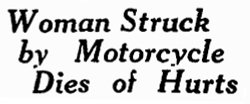 1934. Emsman Joe Shaw, 26, was roaring along on his motorcycle on a Friday night down at 30th and Broadway, when he fatally struck Mrs. Marianna Valenzuela, 58. Hey, I warned you that the Ems lacked gripping and protracted tales. But look at those pretty pictures.
1934. Emsman Joe Shaw, 26, was roaring along on his motorcycle on a Friday night down at 30th and Broadway, when he fatally struck Mrs. Marianna Valenzuela, 58. Hey, I warned you that the Ems lacked gripping and protracted tales. But look at those pretty pictures.
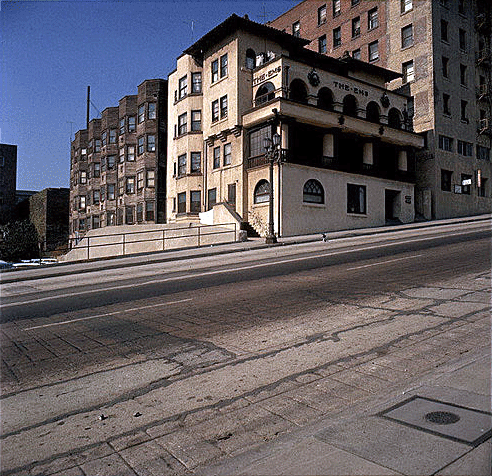
 1942. Every hotel has a suicide. And despite Harold‘s line to his Uncle Victor–“during wartime the national suicide rate goes down”–on Bunker Hill, there‘s still wartime Selbsmord (the Belmont had two in ‘42). It‘s easy to posit that the suicide rate is a constant, and the papers make a point of reporting ”˜em during wartime to detract the populace from all those incoming body bags. If you go for that sort of mass-media-control conspiracy. That notwithstanding, nine months after we got into the war, Joseph Buotha, a 58-year-old former private investigator, ate several bottles of pills in his Ems apartment. He had just written a long telegram to Eleanor Roosevelt, and this note: “Please let me alone. Let fate take its course. Notify John G. Wenk to take care of my belongings. Please don‘t hurt the dog. May God forgive you.”
1942. Every hotel has a suicide. And despite Harold‘s line to his Uncle Victor–“during wartime the national suicide rate goes down”–on Bunker Hill, there‘s still wartime Selbsmord (the Belmont had two in ‘42). It‘s easy to posit that the suicide rate is a constant, and the papers make a point of reporting ”˜em during wartime to detract the populace from all those incoming body bags. If you go for that sort of mass-media-control conspiracy. That notwithstanding, nine months after we got into the war, Joseph Buotha, a 58-year-old former private investigator, ate several bottles of pills in his Ems apartment. He had just written a long telegram to Eleanor Roosevelt, and this note: “Please let me alone. Let fate take its course. Notify John G. Wenk to take care of my belongings. Please don‘t hurt the dog. May God forgive you.”

 1949. Joe Rupino, 50, was leaning over the railing on the second story balcony, shaking the dust from a rug, when the railing gave way and he fell fifteen feet to the pavement. Rupino received possible fractures of the right wrist, forearm and shoulder, and a trip to Georgia Street and a transfer to General Hospital.
1949. Joe Rupino, 50, was leaning over the railing on the second story balcony, shaking the dust from a rug, when the railing gave way and he fell fifteen feet to the pavement. Rupino received possible fractures of the right wrist, forearm and shoulder, and a trip to Georgia Street and a transfer to General Hospital.
There‘s that railing! The railing of DEATH!
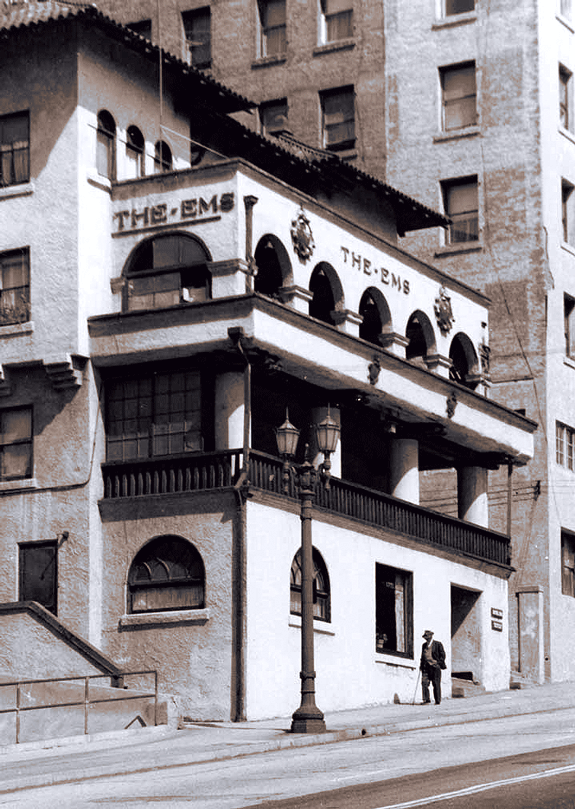
Ok, the railing of death. It‘s not much, but it‘s something.
Of course we know how the story ends. The Ems gets its demo permit pulled in July 1965. By the summer of ’66 it’s just a pile where a truck can pull up, while erstwhile neighbor the Casa Alta is undergoing a similar fate:
After the last few posts–piles of brick, crenellated castles, Neo-Classical noodling–I am happy to say look at all that stucco (stucco that‘s supposed to be there, not stucco that was thrown over shingle–although to be honest, it wasn‘t thrown over adobe brick, either). The deep arcades, the rounded arches, the low-pitched red tile roofs”¦Mission Revival sure oozes picturesque. Were the square flat roof to call a California antecedent to mind, you might think of the 1894 Burlingame train station. 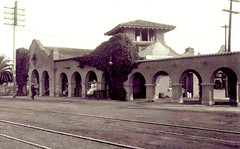 The Ems is “twin tower”, á la the Santa Barbara Mission, and of course there‘s the contemporary tri-tower version a couple blocks over, the somewhat less Mission and more Moorish St. Regis.
The Ems is “twin tower”, á la the Santa Barbara Mission, and of course there‘s the contemporary tri-tower version a couple blocks over, the somewhat less Mission and more Moorish St. Regis.
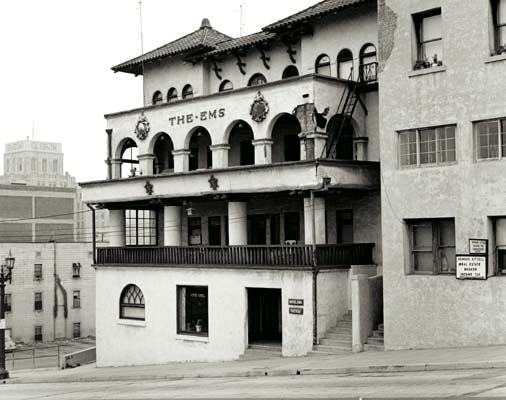
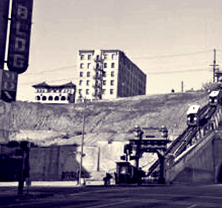 The Ems and the Palace, chunks missing from their plaster, give Bunker Hill the appearance of a city pockmarked by battle.
The Ems and the Palace, chunks missing from their plaster, give Bunker Hill the appearance of a city pockmarked by battle.
When it comes to architecture important to this part of the world, it can be argued that Spanish Colonial/Mission Revival is our own honest, expressive flowering, that‘s crowd-pleasing but not childish, sometimes silly but never stupid, hard to notice sometimes and often hard to preserve.
It‘s sad to lose Bunker Hill in general; we’re sorry to lose the Ems in particular.
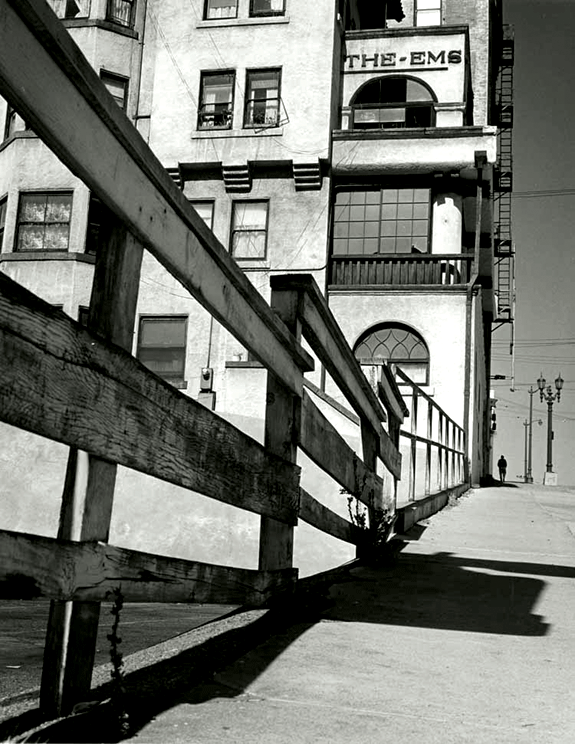
Early shots, Los Angeles Public Library Photo Collection; later b/w shots, William Reagh and Arnold Hylen Collections, California History Section, California State Library; color shots, Walker Evans, “439 Architectural Views for Time-Life Project ‘Doomed Architecture'”, metmuseum.org


